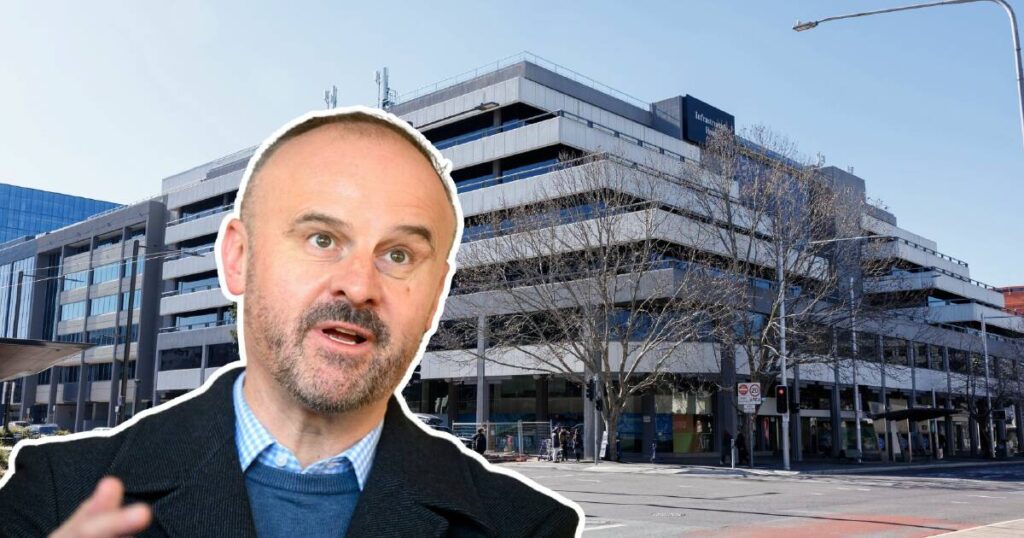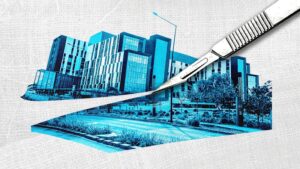
In the wake of a significant exodus of public servants from Canberra’s city centre, Chief Minister Andrew Barr has outlined a vision for revitalizing the area through innovative redevelopment. Speaking a year after the ACT election, Barr emphasized the need to reimagine office spaces into residential and entertainment hubs, urging collaboration with the federal government to expedite approvals for new housing projects.
Andrew Barr’s strategy includes converting vacated office buildings into homes, including student and key-worker accommodations. This aligns with the government’s broader goal of creating a more compact city, transforming the central business district into a vibrant residential and entertainment zone.
Challenges and Opportunities in Canberra’s CBD
The departure of major government departments, such as the Australian Taxation Office and the Department of Foreign Affairs and Trade, presents both challenges and opportunities for Canberra’s CBD. The Infrastructure Department is also set to relocate, leaving behind buildings constructed in the 1980s. Barr acknowledges the potential threat of these structures becoming empty monoliths but sees potential in their adaptive reuse.
“The last thing we want is monolithic Commonwealth agency buildings of the ’80s and ’90s sitting empty for extended periods of time,” Barr stated, highlighting the urgency for redevelopment.
Adaptive Reuse and Redevelopment
The Chief Minister stressed the importance of intelligent adaptive reuse or redevelopment of these former offices. He expressed a desire for the Commonwealth government to assist in identifying viable redevelopment opportunities, particularly as many buildings fall under the National Capital Authority’s jurisdiction.
“I imagine a number of these buildings, the adaptive reuse will be for some form of residential. It will be important as part of the national housing target and the ACT share of that, that the Commonwealth will play a role there,” Barr said.
Barr’s vision includes exploring student accommodation, co-housing, key worker housing, and build-to-rent projects. These initiatives aim to increase the residential population while supporting a more compact city model, integrating housing near employment, transport, retail, and entertainment nodes.
Revitalizing Canberra’s Nightlife and Economy
Barr also envisions a thriving nighttime economy driven by cultural and entertainment venues. The planned UNSW campus, convention centre expansion, and potential casino redevelopment are expected to attract more visitors from interstate and overseas, boosting Civic’s vibrancy.
“In looking at the nighttime economy, the theatre obviously will be a major driver, it will be used hundreds of nights a year,” Barr noted, emphasizing the role of cultural venues in sustaining local hospitality and activity.
Federal and Local Collaboration
The ACT government is eager to work constructively with the Commonwealth and property developers to facilitate these transformations. Barr sees the federal government’s role as crucial, particularly in streamlining approval processes and supporting innovative redevelopment solutions.
“We are open to some innovative solutions around how to either adaptively reuse or redevelop those sites,” Barr stated, underscoring the need for collaborative efforts.
Looking Forward: The Future of Canberra’s CBD
The transformation of Canberra’s city centre is set against a backdrop of broader urban planning goals. As the ACT government pushes for a more compact and integrated city, the redevelopment of vacated office spaces into residential areas is seen as a key strategy.
With the potential to revitalize the local economy and enhance the city’s cultural and entertainment offerings, Barr’s plans represent a significant shift in Canberra’s urban landscape. The collaboration between local and federal governments, alongside private developers, will be pivotal in realizing this vision.
As Canberra navigates these changes, the implications for residents, businesses, and the broader community will unfold, shaping the future of the city’s central district.







